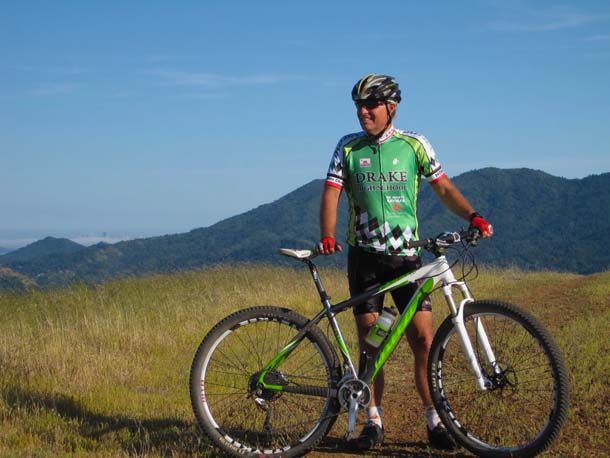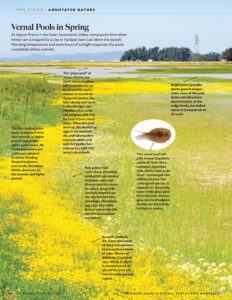Joe Breeze was five years old when he started exploring his vast backyard — Mount Tamalpais. The redwood canyons, meadows, and trails provided the perfect natural jungle gym for a child, and this mountain would come to play a crucial role in Breeze’s adult life.
If you’ve ever ridden a mountain bike, those places have played a role in your life too. Breeze, founder and CEO of Breezer Bikes, was one of the pioneers of mountain biking, helping invent a brand new way of experiencing the outdoors.
“I grew up outside,” Breeze said as we ascended a dusty fire road into the Mount Tamalpais watershed. At 58 years old Joe is in excellent shape and still likes to ride fast. Today he’s on a carbon fiber Breezer Cloud 9 that’s about half the weight of the steel mountain bike he pioneered in 1977.
Breeze has been making bikes for 40 years and is regarded as one of the best bike craftsman around. But I didn’t go on this ride to learn about the origins of mountain biking (watch it on video). Instead I got to know Joe through one of his other favorite activities — identifying wildflowers.
Delicate and resilient
Since 1978 Joe and many of his original mountain biker buddies have been fascinated by wildflowers and botany.
“Wildflowers are intriguing to me because they are delicate and resilient,” he says. “By observing them I’ve come to better understand the ecosystem in which I live.”
In 1976 and 1977, Marin County experienced one of the worst droughts in its history. Mill Valley received only 15 inches of rain compared to its average of 40 inches. After two years of drought, the landscape was dry and barren. When the rain returned in 1978, it brought with it a vast array of wildflowers and created new botanical enthusiasts.
“The following year I borrowed my first wildflower identification book, Spring Wildflowers of the San Francisco Bay Region, from my aunt and from there my hobby became a passion,” Breeze says.
Breeze is red-green colorblind, which makes activities such as birding extremely challenging. He says he prefers to study flowers because they don’t fly off; he can watch them for a long time.
As we ride up the trail we stop along a steep bluff with a few wildflowers hidden in the thick rattlesnake grass. Joe spots a fragile pink flower growing just below the grass.
“These five petals right here compose the floral tube of the corolla. All flowers in the phlox family have that, so that’s a phlox but I couldn’t tell you the Latin name.”
Farther up the trail we spot an area with purple Douglas irises, blue larkspur, yellow sticky monkeyflower, and white-blossomed wild strawberries.
The unwelcome kind
Breeze also has an eye out for less welcome plants, including French broom, a highly invasive plant that crowds out wildflowers and other native plants.
“I remember a tall stalk of French broom growing near Pan Toll Ranger Station in 1973,” Breeze says. “The concept of eradicating this invasive plant was still formulating and we made sure to look both before yanking it.”
He carefully removes a few stalks of broom, making sure not to damage the surrounding flowers.
Riding bikes on single-track trails was not nearly as unconventional a practice at the time as non-native plant removal, Breeze said.
“I remember riding along the Tucker trail with Otis Guy and Fred Wolf, we came along a couple hiking, so we naturally slowed down and got off our bikes,” he says. “They said they hoped we had a nice ride, and that was the way it went.”
That’s not the kind of encounter you see much anymore.
“Nowadays there is tension between hikers and bikers,” Breeze says. “Being a hiker myself, I can understand why one wouldn’t want bikes on trails, but if there is mutual respect between the two parties and everyone is courteous to each other, we can share the trails.”
A dusty road
We get back on our bikes and continue up the dusty road passing Kent Lake and then take a breather before the climb to the top of Pine Mountain. Light dances across the rolling waves offshore and, on our way to the Farifax-Bolinas road, we pass through meadows with patches of blue-eyed grass, poppies, lupin, and tidytips.
Pine Mountain is regarded as the true birthplace of mountain biking. The first bike races were held on the Repack trail here, and those racers continued to innovate the sport. The fire road becomes progressively steeper and rockier. One section of the trail is exclusively composed of rocks. These rocks and serpentine soils make great bike trails, but also provide excellent habitat for native plants, where unusual soil chemistry keep the weeds at bay.
When we reach the top I am somewhat sore but the view and the company is worth it. From our vista we can see Breeze’s lifetime backyard—Mount Tam—and beyond to San Francisco.





